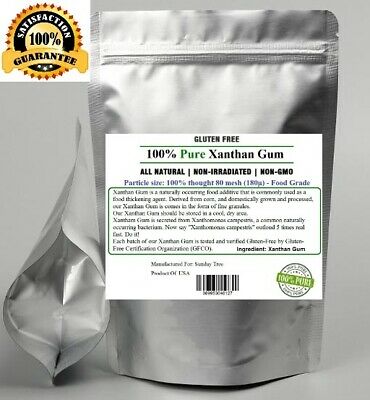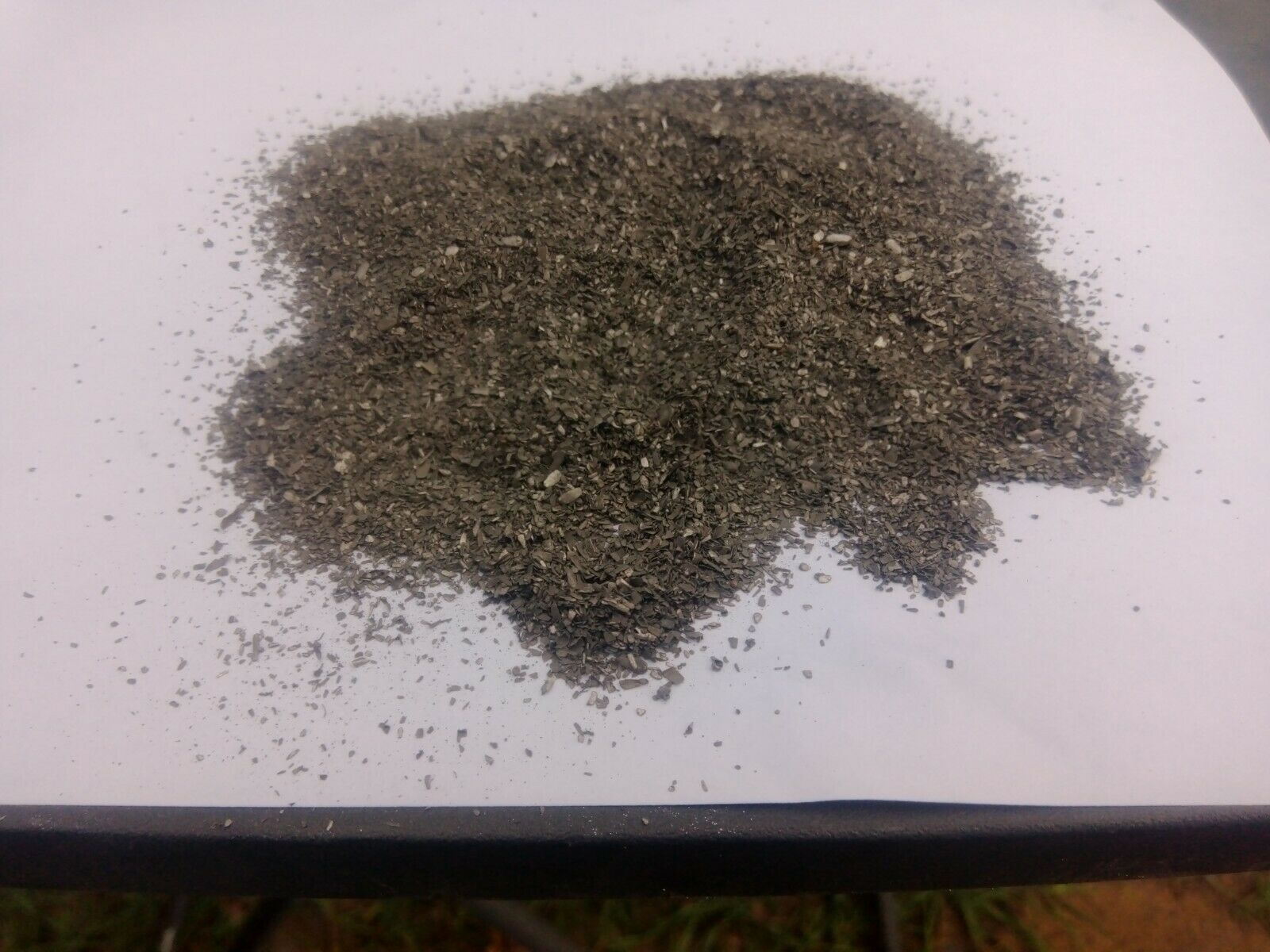-40%
1.1 lb (500g) Xanthan Gum Powder in Package - Food Grade -FREE SHIPPING,NON-GMO
$ 10.02
- Description
- Size Guide
Description
WE GUARANTEE THAT WE HAVE THE BEST PRICE AND QUALITY ON EBAY !100% Pure Xanthan Gum,
GLUTEN FREE,NON-GMO
particle size: 100% thought 80 mesh (180µ)
1.1 lb (500g) Xanthan Gum Powder in Package - Food Grade
ITEM CONDITION:
BRAND NEW AND SEALED
F
REE SHIPPING, FAST DELIVERY.
30 DAYS MONEY BACK, NO RESTOCKING FEE!
Shelf life-
Expiration Date: 36 Months in seal and cool condition.
This has been prepared from Corn And Soy Protein and does not contain or come into contact with any animal materials or derivatives. therefore, this product would not be at risk of carrying Bovine Spongiform Encephalopathy (BSE-Mad Cow Disease) or Transmissable Spongiform Encephalopathy (TSE) materials
Xanthan gum
is a
polysaccharide
, derived from the bacterial coat of
Xanthomonas campestris
, used as a
food additive
and
rheology
modifier, commonly used as a food thickening agent (in salad dressings, for example) and a stabilizer (in cosmetic products, for example, to prevent ingredients from separating). It is produced by the
fermentation
of
glucose
,
sucrose
, or
lactose
by the
Xanthomonas campestris
bacterium
. After a fermentation period, the polysaccharide is precipitated from a growth medium with
isopropyl alcohol
, dried, and ground into a fine powder. Later, it is added to a liquid medium to form the gum.
One of the most remarkable properties of xanthan gum is its ability to produce a large increase in the
viscosity
of a liquid by adding a very small quantity of gum, on the order of one percent. In most foods, it is used at 0.5%, and can be used in lower concentrations. The viscosity of xanthan gum solutions decreases with higher shear rates; this is called
shear thinning
or pseudoplasticity. This means that a product subjected to shear, whether from mixing, shaking or even chewing, will thin out, but once the shear forces are removed, the food will thicken back up. A practical use would be in salad dressing: the xanthan gum makes it thick enough at rest in the bottle to keep the mixture fairly homogeneous, but the shear forces generated by shaking and pouring thins it, so it can be easily poured. When it exits the bottle, the shear forces are removed and it thickens back up, so it clings to the salad. Unlike other gums, it is very stable under a wide range of temperatures and
pH
.
In foods, xanthan gum is most often found in salad dressings and sauces. It helps to prevent oil separation by stabilizing the
emulsion
, although it is not an
emulsifier
. Xanthan gum also helps suspend solid particles, such as spices. Also used in frozen foods and beverages, xanthan gum helps create the pleasant texture in many ice creams, along with
guar gum
and
locust bean gum
. Toothpaste often contains xanthan gum, where it serves as a binder to keep the product uniform. Xanthan gum (when sometimes not made from wheat—see
Allergies
for gluten-free allergy information) is also used in
gluten-free
baking. Since the gluten found in wheat must be omitted, xanthan gum is used to give the dough or batter a "stickiness" that would otherwise be achieved with the gluten. Xanthan gum also helps thicken commercial egg substitutes made from egg whites, to replace the fat and emulsifiers found in yolks. It is also a preferred method of thickening liquids for those with swallowing disorders, since it does not change the color or flavor of foods or beverages at typical use levels.
In the
oil industry
, xanthan gum is used in large quantities, usually to thicken
drilling mud
. These fluids serve to carry the solids cut by the drilling bit back to the surface. Xanthan gum provides great "low end"
rheology
. When the circulation stops, the solids still remain suspended in the drilling fluid. The widespread use of
horizontal drilling
and the demand for good control of drilled solids has led to its expanded use. It has also been added to
concrete
poured underwater, to increase its
viscosity
and prevent
washout
.
In cosmetics, xanthan gum is used to prepare water gels, usually in conjunction with
bentonite
clays. It is also used in oil-in-water emulsions to help stabilize the oil droplets against
coalescence
. It has some skin
hydrating
properties. Xanthan gum is a common ingredient in
fake blood
recipes, and in
gunge
/slime.
Have you heard of xanthan gum, one of the 30 most popular ingredients used in food products? You'll find it in salad dressings, sauces, ice cream and also gluten free foods. What is xanthan gum, and why is it such a popular ingredient?
What you need to know:
1. Xanthan Gum is made by fermenting corn sugar with a bacteria,
Xanth
omonas campestris. It's the same bacteria that creates black spots on broccoli and cauliflower. The result is a slimy goo that is then dried up and ground into a fine white powder.
2. Xanthan gum is an emulsifier. It helps ingredients blend more effectively and stay blended while waiting on a shelf. For example - water and oil mixtures, as well as bits of spice in a salad dressing.
3. Xanthan gum is also used as a thickener. Add a bit to water and it becomes more viscous. Many fat free salad dressing maintain and oily viscosity by using thickeners such as xanthan gum. In pastry fillings, it prevents the water seeping out and soaking the dough, thus protecting the crispness of the crust.
4. Xanthan gum is used in ice creams as well to prevent the formation of ice crystals and keep the product "smooth".
5. Xanthan gum has become popular in the gluten free circles. It helps give the dough a sticky consistency.
6. Only a small amount of xanthan gum is necessary to achieve the desired result, usually less than 0.5% of the food product weight.
7. When mixed with guar gum or locust bean gum, the viscosity is more than when either one is used alone, so less of each can be used.
8. Nutritionally, xanthan gum is a carbohydrate with 7 grams of fiber per tablespoon. This may cause bloating in some people.
9. Xanthan gum may be derived from a variety of sources such as corn, wheat, or soy. People with an allergy to one of the above, need to avoid foods with xanthan gum, or to ascertain the source.
10. Xanthan Gum was "discovered" by a team of USDA researchers in the 1960's. In 1968 it was approved for use as a food additive in the US and Europe.





